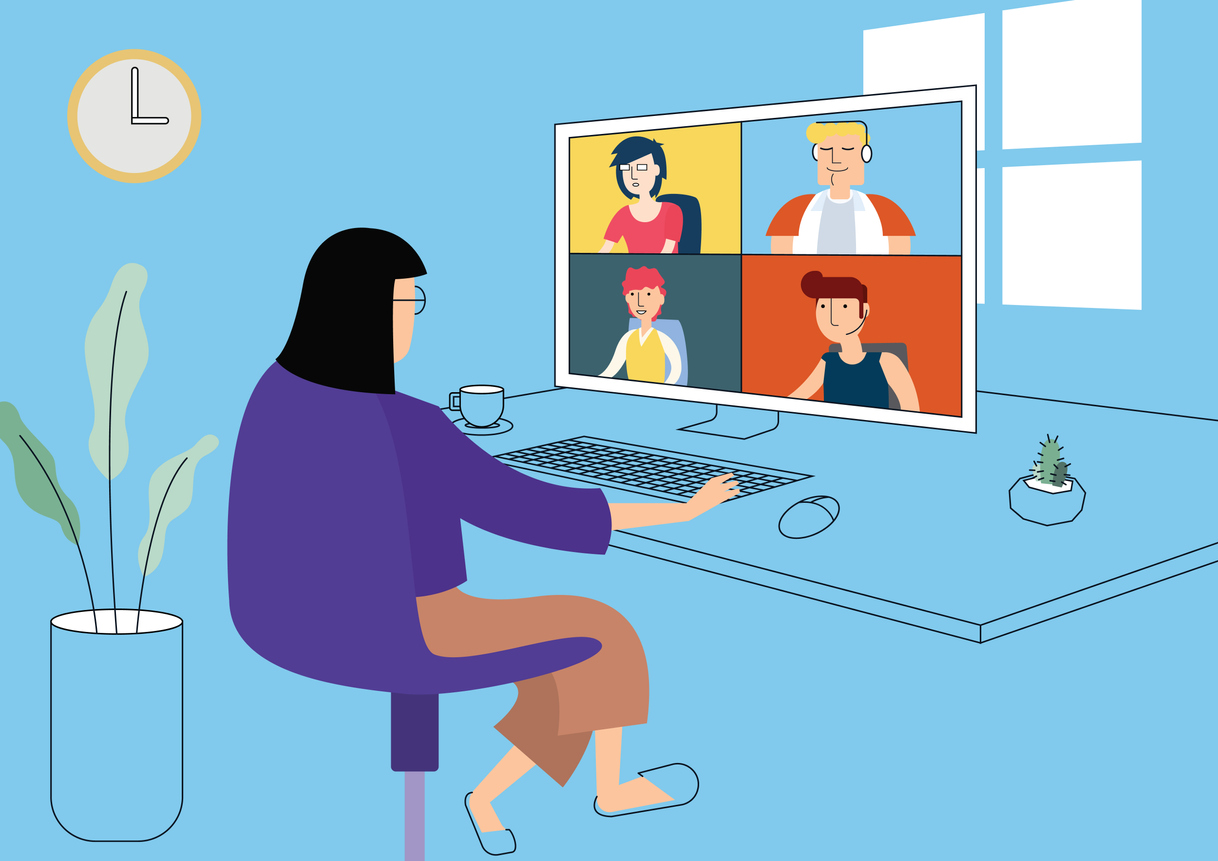
Sorry, I was on mute. Can you hear me? Great, let’s get started.
Virtual meetings are nothing new, but in the middle of the COVID-19 pandemic, they are the only way many of us can meet. Which means all the annoying, inefficient, and counterproductive aspects of working together, while apart, are magnified.
When people are in a room together, there are subtle visual and auditory cues that manage the flow of conversation. Online, we lose so much of that information. We talk over each other. We start and stop talking abruptly. Some people just choose to clam up. Because we aren’t in the same room, we can’t point at things, huddle around the same flipchart to add our ideas, or pass out information and tools to use during the session. Our virtual meetings are often inefficient and just plain awkward.
Here are some tips to cure our virtual meeting woes.
HOSTS
Be the boss. One person should act as host of the meeting. Tell folks how it’s going to be and maintain those new norms. Virtual meetings are harder to get right, so they need more structure and a firmer hand. Before the meeting, make sure everyone has the information and technology to participate. After you share your screen and confirm that they see it, show everyone the participant list and take attendance. Show them the agenda and walk through it. Tell everyone that you will build in engagement – how you will be using the chat and other shared spaces to capture all of their input, facilitate good work, and make sure everyone has the summary and clear action items after the meeting.
Chat them up. Everyone should keep the chat window open and use it. Encourage participants to chat their comments or “raise their hands” on chat. Read those comments and stop from time to time to ask participants to speak. Notice who’s not speaking OR chatting; call on the quiet kid in the back of the room to give that person the floor for a minute. At the end of the call, invite participants to leave any final comments in the chat, then make sure you capture those in your meeting notes.
And promote a little chat anarchy. During our internal virtual meetings at Emerson, we do a lot of socializing on the chat – greeting each other, joking around, and posting shout-outs and celebration. Even if it’s not strictly on-topic, that’s ok! You should allow the kind of connection that normally happens as people gather in-person.
Use your words. Even if you’re on video, your facial expressions and gestures won’t land the same way as when you’re in-person. So add a layer of words. Make sure everyone knows where you are in the agenda, all the time. Ask them whether they can see what you think they’re seeing. You can’t point at something with your hand, so use your cursor and tell everyone where you are looking and which item you’re talking about. Pause at critical points to confirm that everyone is with you. Also, capture on screen and online, agreements, issues, comments, and next steps.
Think outside the screen. Consider structuring your work differently. For example, if you would normally ask small groups to put their heads together during an in-person session, chunk up your virtual meeting: a set-up, a break for small group work on the phone or email, and then a sharing session so groups can report out virtually. What might have been a continuous session in-person could be conducted in smaller sessions over a two-day period.
End on a high note. Use humor. Congratulate someone or celebrate a win. Switch to a grid or gallery view, so everyone can see all the faces on video. Ask participants to answer a fun question in the last few minutes. Do this often enough, and it becomes part of your culture.
PARTICIPANTS
Get ready to work. Arrive ahead of time and test your audio/video. Make sure you’re in a quiet place – no construction, family activity, or barking dogs. And just in case, MUTE when you’re not speaking. True Story: one of my virtual meetings was interrupted by a rooster crowing outside my colleague’s window! To be fair, it wasn’t his rooster. But do try to make sure your next call is rooster-free.
Don’t just join the meeting; be present. This is really hard, but don’t multi-task. Would you be texting or answering emails if you were in a small group in-person meeting? Probably not. Follow your host’s direction, so you don’t lose track of the conversation. And engage! Have mercy of your poor facilitator. Nothing’s worse than that dead silence when they ask for a response.
Be part of the solution. Are you frustrated with the meeting process or see an improvement? Don’t resign yourself to it— let your facilitator know, one on one. Your input can help virtual work evolve to serve your organization better.
Virtual meetings are here to stay especially after the COVID-19 crisis. But virtual work can evolve and change. Let’s resolve to be better at virtual tomorrow than we were yesterday.




